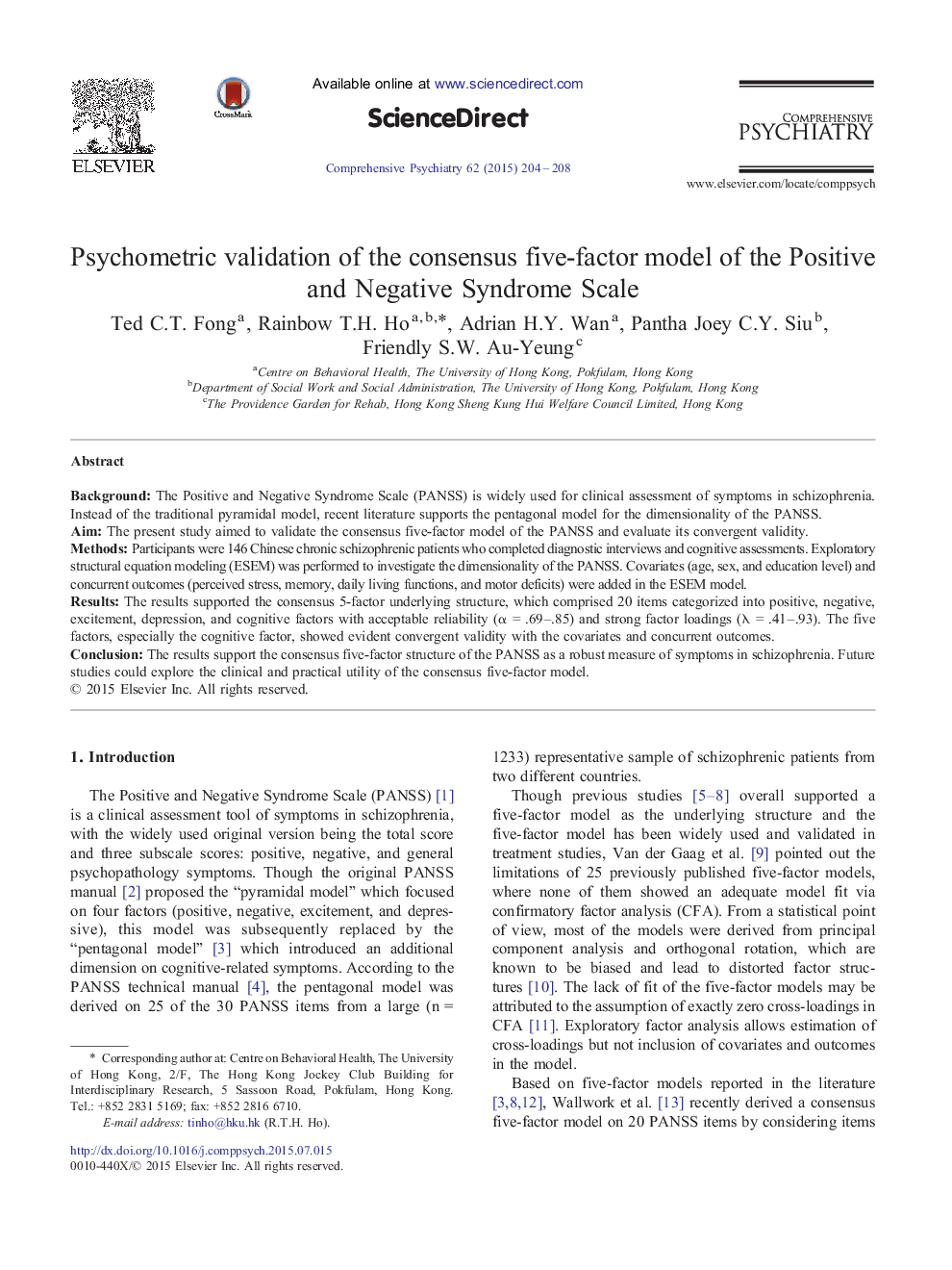| Article ID | Journal | Published Year | Pages | File Type |
|---|---|---|---|---|
| 317984 | Comprehensive Psychiatry | 2015 | 5 Pages |
BackgroundThe Positive and Negative Syndrome Scale (PANSS) is widely used for clinical assessment of symptoms in schizophrenia. Instead of the traditional pyramidal model, recent literature supports the pentagonal model for the dimensionality of the PANSS.AimThe present study aimed to validate the consensus five-factor model of the PANSS and evaluate its convergent validity.MethodsParticipants were 146 Chinese chronic schizophrenic patients who completed diagnostic interviews and cognitive assessments. Exploratory structural equation modeling (ESEM) was performed to investigate the dimensionality of the PANSS. Covariates (age, sex, and education level) and concurrent outcomes (perceived stress, memory, daily living functions, and motor deficits) were added in the ESEM model.ResultsThe results supported the consensus 5-factor underlying structure, which comprised 20 items categorized into positive, negative, excitement, depression, and cognitive factors with acceptable reliability (α = .69–.85) and strong factor loadings (λ = .41–.93). The five factors, especially the cognitive factor, showed evident convergent validity with the covariates and concurrent outcomes.ConclusionThe results support the consensus five-factor structure of the PANSS as a robust measure of symptoms in schizophrenia. Future studies could explore the clinical and practical utility of the consensus five-factor model.
